The Remarkably Stunning, Boldly Colored Scarlet Minivet Is A Rare Find
Identifying bird species in the wild can be fairly tricky without the proper guide, especially when male and female birds of the same species look significantly different from one another. Certain bird species can differ in appearance for a number of reasons that all serve to help the bird survive.
Reasons that male and female birds may have different physical characteristics include protection of the nest, camouflage, and mating. The scarlet minivet is one bird species that highlights just how different male and female birds of the same species can look.
The scientific name for the species is Pericrocotus specious but it's easy to see why the bird inherited its more commonly known name, Scarlet minivet. The male birds boast a brilliant scarlet belly that makes them stand out in forest foliage.
The species is native to southern Asia ranging from the Indian subcontinent and stretching east towards southern China, Indonesia, and the Philippines. Minivets are small birds from the passerine family, they are known to grow 20-22cm long when fully mature.
This bird typically lives in a flock and prefers the social dynamic of living with other birds, regardless of their species. Continue reading to find out how these magnificent birds interact in their natural habitat.
The black feather hood on the male birds give them an intense appearance
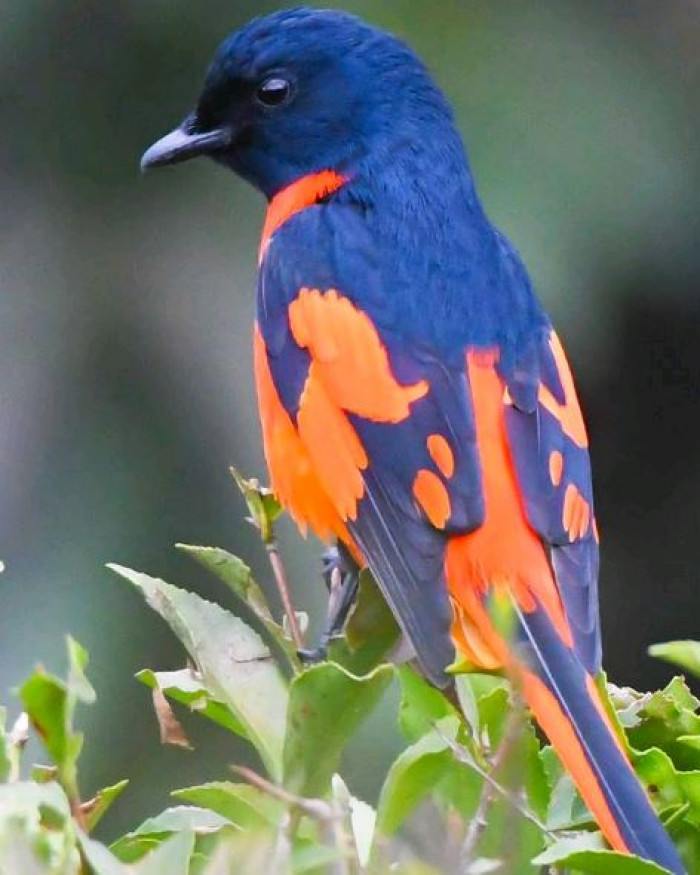
The female minivet is a combination of grey-blue and lemon yellow colors (as pictured) with slight variations in shades
Scarlet minivets are monogamous birds that breed between February and September. They build a relatively large and shallow cup-shaped nest that is woven together using a combination of small twigs and stolen spiderwebs.
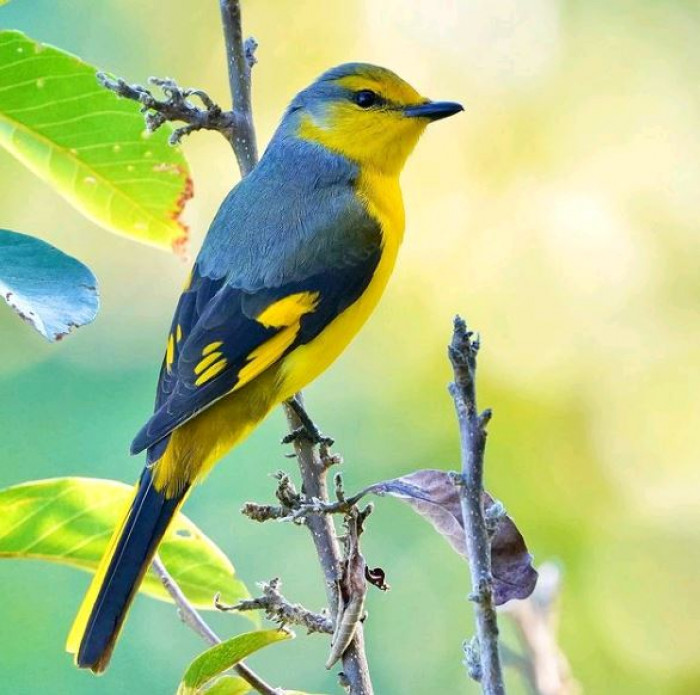
The male bird boasts black upperparts, a jet black head with a flash of scarlet on black wings, and a bright scarlet belly.
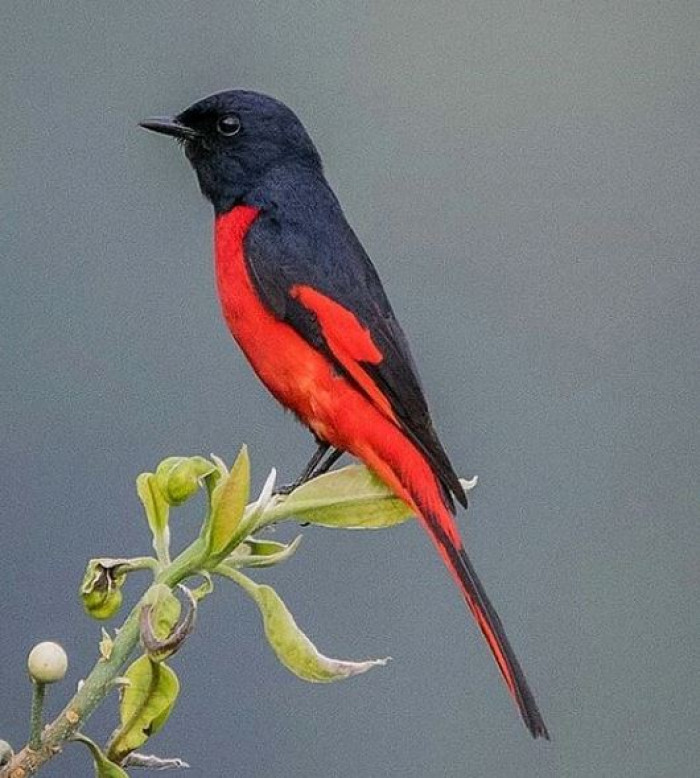
The color and shape and of the bird's wing patches vary across subspecies
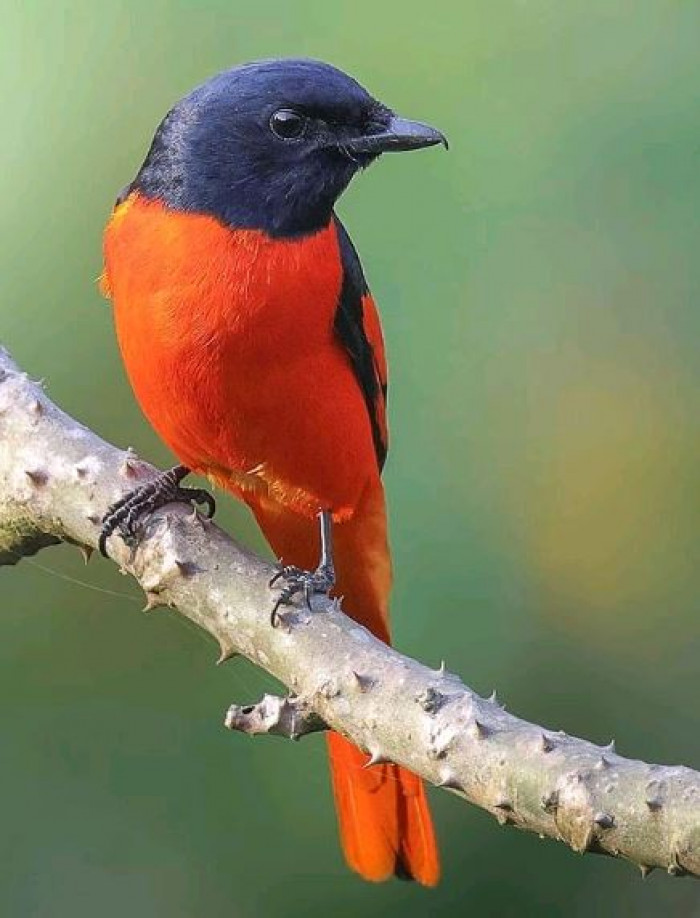
Scarlet minivets prefer to live in flocks in a rainforest habitat, either in lowland areas or mountainous regions
They nest in the canopy where they hunt and the female will lay 2-4 eggs within the cup-shaped nest. The eggs incubate for 14-18 days and then both the parent birds will help hunt to feed the hatchlings when they arrive.
Chicks will reach fledgling age after 2-3 weeks.
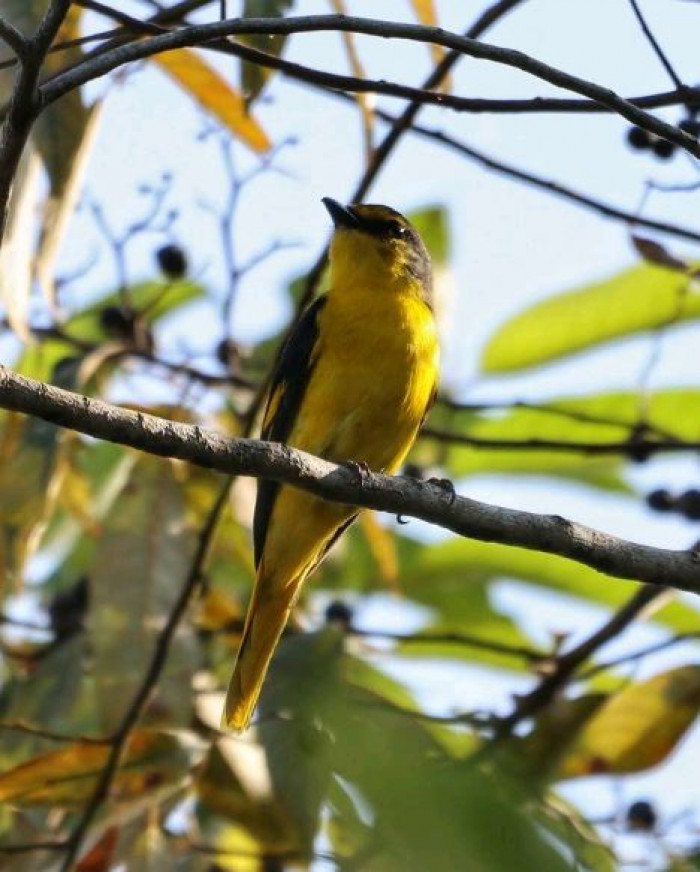
This species is sturdy in populations and will also frequent swamp forest areas, and occasionally, rural lands
Due to a wide breeding range, Scarlet minivet's are considered to have fairly sturdy populations in the wild.
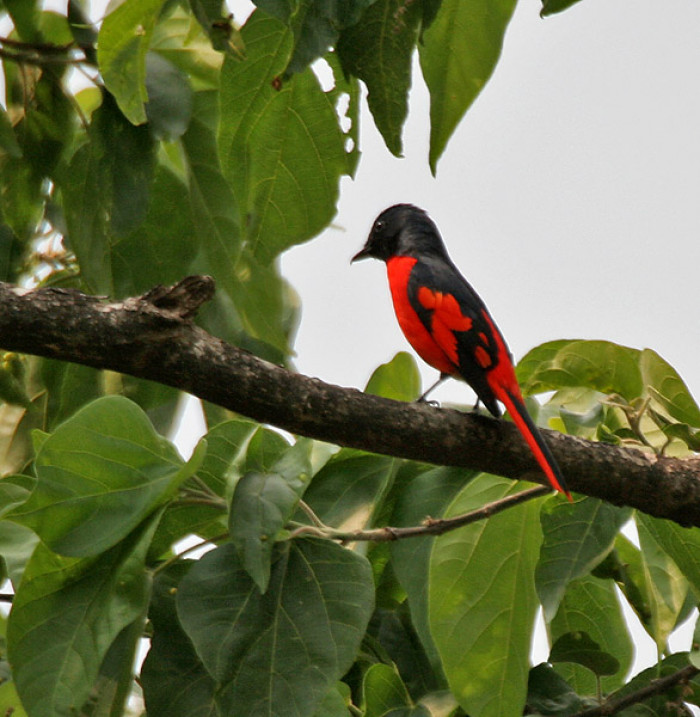
Their diet consists mostly of insects that they hunt high in the canopy among the foliage
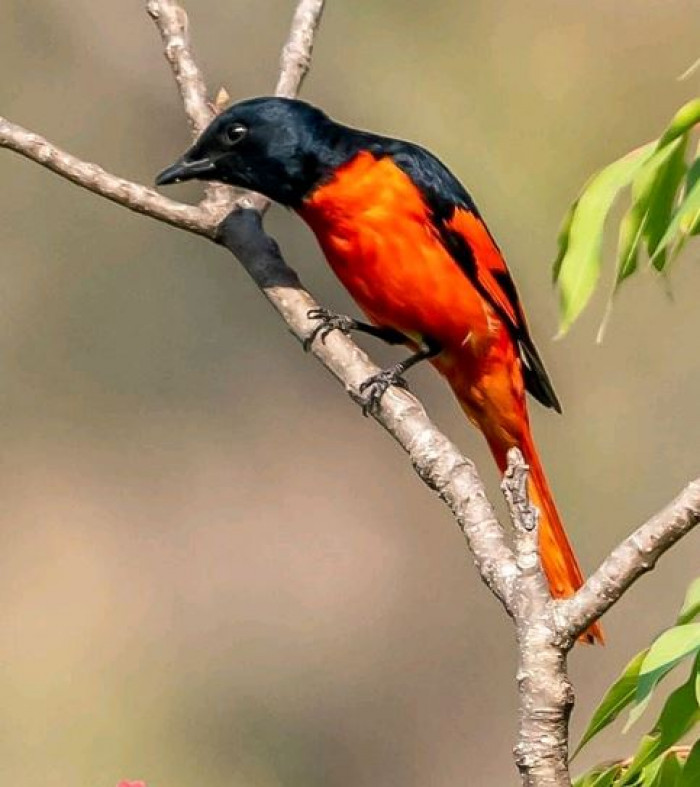
These birds often live and travel in a mixed-species flock
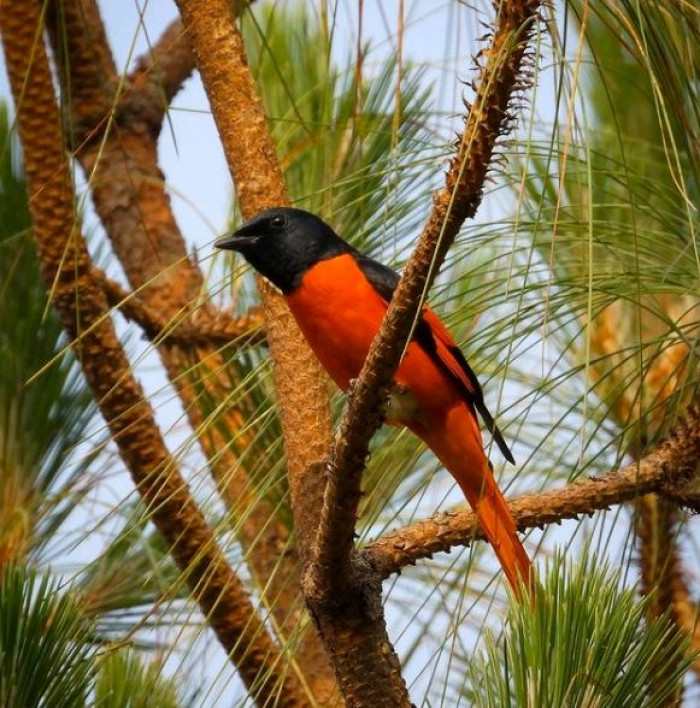
Get to know the Scarlet Minivet in this Youtube clip!
The Scarlet minivet is not considered endangered or at risk
Fortunately for the Scarlet minivet, there is currently no evidence of a decline in the species' populations or any serious threats to their wide-ranging habitats. These birds are great at adapting to their environments and benefit from the safety of a flock, making them an interesting study in the wild!